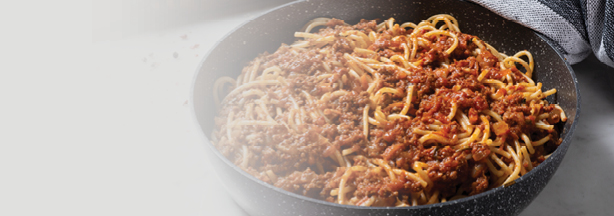8 Diet and Nutrition Goals for People with Stage 3 Chronic Kidney Disease
In stage 3 chronic kidney disease (CKD), the kidneys still function sufficiently to remove fluid, potassium potassium and a moderate amount of waste. In order to help slow the progression of CKD, managing blood pressure, glucose and weight, among other things, is important and can be done through adhering to a kidney diet.
To get started, check out these eight diet and nutrition goals when you have stage 3 CKD:
1. Count your calories.
Adequate calories can either prevent weight loss if you’re at a desirable weight or provide extra calories if you are underweight. Weigh yourself often and keep track to see if you need additional or fewer calories. Your dietitian will determine a desirable weight and monitor your progress.
2. Eat the right kinds of fats.
If you have cardiovascular disease or your blood cholesterol is high, unhealthy fats—such as saturated fats and trans-fats—should be replaced by poly- and monounsaturated fats from vegetable oil, canola oil and olive oil. A limit on high cholesterol foods is recommended.
3. Watch for symptoms of fluid retention.
Fluid is not restricted in stage 3 CKD unless you experience fluid retention. Sudden weight gain, shortness of breath, swelling in the feet, hands and face and high blood pressure are signs of fluid retention. These symptoms may indicate a decline in kidney function and decreased urine output.
4. Reduce your phosphorus intake.
A diet with no more than 800 mg of phosphorus can help reduce the risk of too much phosphorus building up in your blood. Limit intake of foods with high levels of phosphate or phosphate additives such as organ meats, whole grain breads, processed foods, cola beverages, cheese, dried beans, liver, peanut butter, dairy products and chocolate.
5. Monitor your potassium levels.
Usually, potassium is not restricted in stage 3 CKD unless lab tests show potassium is too high. Your doctor may make medication changes or prescribe a low-potassium diet. Reduce an elevated potassium level by limiting some high-potassium foods and potassium chloride (found in salt substitute and many low-sodium processed foods), such as avocado, bananas, cantaloupe, honeydew, legumes, milk, nuts, potatoes, seeds, tomato products and yogurt.
6. Know your recommended daily intake of protein.
The recommendation for protein intake in stage 3 is 0.8 g/kg body weight, the same recommendation for a healthy 150-pound adult. Whether your doctor recommends a high- or low- protein diet, it’s important to make sure your protein intake comes from high-quality sources such as egg whites, fish, poultry, meat, soy and small of amounts of dairy.
People on vegetarian and vegan diets may find it easier than meat eaters to limit protein in their diet, but will need to monitor their phosphorus and potassium intakes more closely.
7. Decrease your sodium intake.
Limiting salt and high-sodium foods reduces hypertension, assists blood pressure medications to work more effectively and treats fluid retention. The sodium recommendation for stage 3 CKD is 1,000 to 4,000 mg/day. Speak with your doctor or dietitian to determine your recommended daily amount.
8. Stay the course!
When you have stage 3 CKD, it’s important to know what your diet and nutrition goals are. Adhering to your doctor or dietitian’s kidney diet prescription could help slow the progression of the kidney disease and improve your quality of life.
Looking for more information?
Check out “3-Day Springtime Menu for a Kidney Diet” for a stage 3 kidney disease sample diet, and “A DaVita Dietitian's Top 15 Healthy Foods for People with Kidney Disease.”
Related articles on DaVita.com

Download
Cookbooks
Access free kidney-friendly cookbooks from DaVita dietitians.
1,000,000+ Enjoyed So Far!

Eating Out
Guides
See kidney-friendly food and drink choices to consider when eating out at your favorite restaurants. Choose from 12 cuisine types.
